Oct. 2 to Oct. 7
All was calm in Kinmen on Oct. 6, 1958, 44 days after the first barrage of about 40,000 artillery shells that fell from the sky. People started to emerge from their crude homemade shelters, and the more well-off residents started preparing to head to Taiwan in case the shelling resumed.
“I didn’t even have money to travel to the pier, so I stayed,” Lee Tien-ping (李天平) says in the book, Oral History of the 823 Artillery Bombardment (823砲戰口述歷史), also known as the Second Taiwan Strait Crisis. “Nobody knew that those who went to Taiwan would receive NT$3,000 from the government. If we knew, I believe that the entire island’s population would have left.”
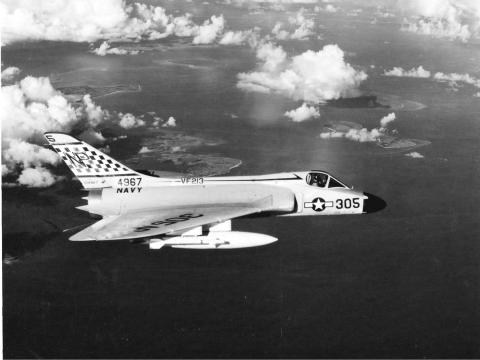
Photo courtesy of Wikimedia Commons
CONFLICTING STATEMENTS
That same day, People’s Republic of China (PRC) Minister of Defense Peng Dehuai (彭德懷) made a lengthy statement to the “compatriots” of Taiwan, Penghu, Kinmen and Matsu, announcing that out of “humanitarian concerns,” the PRC would stop the shelling for seven days for the troops on Kinmen to replenish their supplies. Interestingly, the statement claimed that the goal was not to conquer Kinmen.
“We are all Chinese. Of all choices, peace is the best. This battle is merely of a punitive character … Your leaders have rampaged for far too long … Hence the firing of a few shells — just to get your attention.”
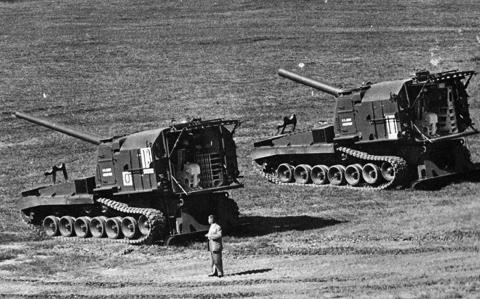
Photo courtesy of Wikimedia Commons
The rest of the statement involved calling for the Chinese Nationalist Party (KMT) to drop its alliance with the US and negotiate directly with the Communists.
“The war between you and us has been going on for 30 years … We propose that talks be held to effect a peaceful settlement … This is an internal Chinese matter between you and us, not a matter between China and the United States.”
But the statements that came out of Taiwan tell a different story. On Oct. 10, during a Double Ten Day celebration, KMT leader Chiang Kai-shek (蔣介石) announced: “After six weeks of brutal battle, we not only foiled the communist bandits’ plan to land on Kinmen, and furthermore suppressed their ambition to invade the entire Southeast Asia. We’ve exposed their weaknesses to the entire world and shown that they are all bark and no bite.”
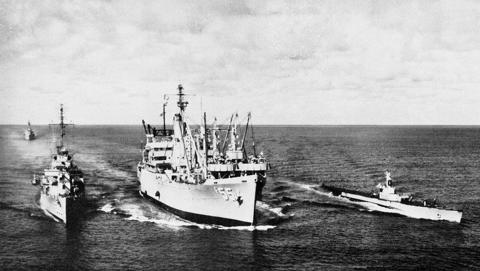
Photo courtesy of Wikimedia Commons
This glorious victory against evil became the official version of events propagated in Taiwan. The same notion was expressed by the majority of veterans featured in the book The 1958 Quemoy Crisis: An Oral History (823戰役參戰官兵口述歷史), which was published by the Ministry of Defense in 2008, that the victory single-handedly stopped the Communists from “washing Taiwan in blood” and prevented them from advancing upon the free world.
Like Chiang, they claim that the PRC’s ceasefire was just a ruse to mask the shame of being unable to take Kinmen.
WHOSE VICTORY WAS IT?
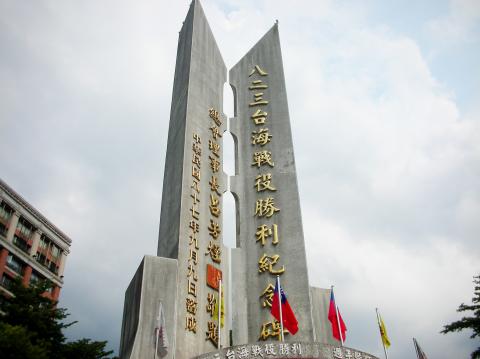
Photo courtesy of Wikimedia Commons
Without taking anything away from these brave warriors’ deeds and sacrifices, were things really that clear cut and simple? With both governments prone to exaggerated and ideological propaganda, let’s take a look at some American sources, whose opinions are also divided.
A Rand Corporation report sponsored by the US Department of Defense published in 1966 supports Chiang’s argument that Communist leader Mao Zedong (毛澤東) aimed to “secure the collapse of the Nationalist regime.” As for the KMT, it was a chance to involve the US directly in major military action against the Communists.
The report also states that the ceasefire was made to avoid failure and even a possible US invasion of China.
“By stopping when they did, the Chinese Communists left it ambiguous whether or not they could have successfully imposed an artillery blockade against the offshore islands,” the report states. “Thus the public record states that the Chinese Communists called off what might have been a successful invasion and thereby exercised restraint and statesmanship rather than making it clear to the world that their effort had ended in failure.”
However, Harvard University professor Michael Szonyi writes in his 2008 book, Cold War Island, that there is still disagreement among scholars as to what led the communists to attack Kinmen in 1958.
“Some scholars argue Mao wanted to eliminate what he perceived to be a real threat of attack from Taiwan, others that he used the attack as a ‘strategic probe’ to test and if possible to complicate the US commitment to the [KMT],” he writes.
Woodrow Wilson School of Public and International Affairs professor Thomas Christensen argues that in the context of mass mobilization for the Great Leap Forward program, the invasion was Mao’s way to “create a sense of external tension and threat and thereby arouse public enthusiasm in supporting his domestic agenda.”
Contrary to the Department of Defense report, Szonyi writes that Mao did not plan to take Kinmen.
“The Republic of China presence on Kinmen was a reminder that both regimes agreed that there was only ‘One China’ that would one day be reunified. If Kinmen were to fall, it might be a first step toward the permanent separation of the two regimes,” he writes.
While Chiang considered fending off the communists a major victory, Szonyi writes that Mao also considered the campaign a victory because it “successfully entrapped the US.”
“Whenever necessary we can shell Kinmen and Matsu,” Szonyi quotes Mao in the book. “Whenever we are in need of tension, we can tighten the noose … We will let them hang there, neither dead or alive, using them as a means to deal with the Americans.”
The Department of Defense report does address these claims but dismisses them as Communist propaganda.
Taiwan in Time, a column about Taiwan’s history that is published every Sunday, spotlights important or interesting events around the nation that have anniversaries this week.

“How China Threatens to Force Taiwan Into a Total Blackout” screamed a Wall Street Journal (WSJ) headline last week, yet another of the endless clickbait examples of the energy threat via blockade that doesn’t exist. Since the headline is recycled, I will recycle the rebuttal: once industrial power demand collapses (there’s a blockade so trade is gone, remember?) “a handful of shops and factories could run for months on coal and renewables, as Ko Yun-ling (柯昀伶) and Chao Chia-wei (趙家緯) pointed out in a piece at Taiwan Insight earlier this year.” Sadly, the existence of these facts will not stop the

Oct. 13 to Oct. 19 When ordered to resign from her teaching position in June 1928 due to her husband’s anti-colonial activities, Lin Shih-hao (林氏好) refused to back down. The next day, she still showed up at Tainan Second Preschool, where she was warned that she would be fired if she didn’t comply. Lin continued to ignore the orders and was eventually let go without severance — even losing her pay for that month. Rather than despairing, she found a non-government job and even joined her husband Lu Ping-ting’s (盧丙丁) non-violent resistance and labor rights movements. When the government’s 1931 crackdown
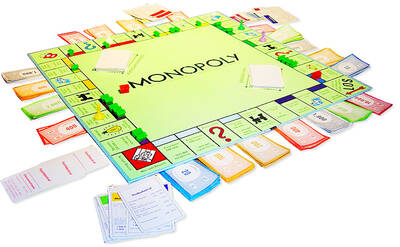
The first Monopoly set I ever owned was the one everyone had — the classic edition with Mr Monopoly on the box. I bought it as a souvenir on holiday in my 30s. Twenty-five years later, I’ve got thousands of boxes stacked away in a warehouse, four Guinness World Records and have made several TV appearances. When Guinness visited my warehouse last year, they spent a whole day counting my collection. By the end, they confirmed I had 4,379 different sets. That was the fourth time I’d broken the record. There are many variants of Monopoly, and countries and businesses are constantly

Taiwan is one of the world’s greatest per-capita consumers of seafood. Whereas the average human is thought to eat around 20kg of seafood per year, each Taiwanese gets through 27kg to 35kg of ocean delicacies annually, depending on which source you find most credible. Given the ubiquity of dishes like oyster omelet (蚵仔煎) and milkfish soup (虱目魚湯), the higher estimate may well be correct. By global standards, let alone local consumption patterns, I’m not much of a seafood fan. It’s not just a matter of taste, although that’s part of it. What I’ve read about the environmental impact of the